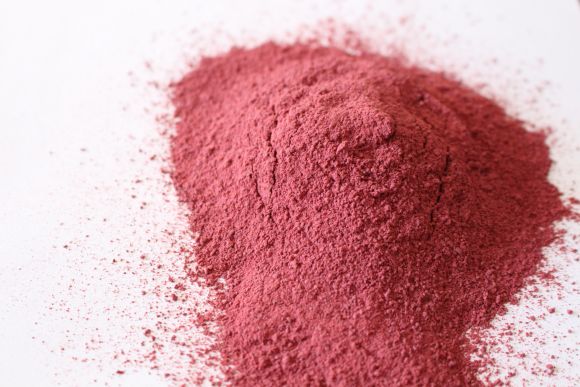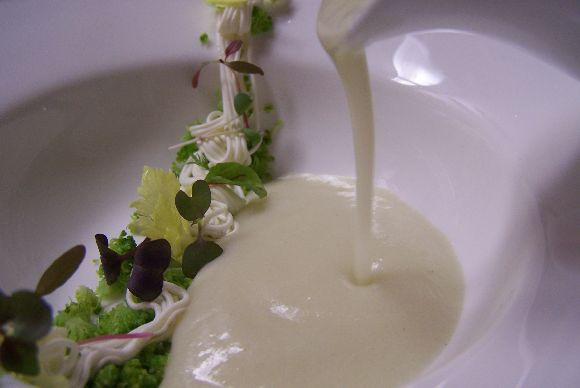
Winter Forage: Chaga – Inonotus obliquus
I was first introduced to “Chaga” at the St. Paul Farmer’s Market, in Lowertown, many years ago on a trip to the cities. A gentleman with a table full of small 2 oz plastic portion cups which were also filling a trashcan next to him (not that it makes a huge difference, but it did kind of kill the “hippy/natural holistic” vibe that he was selling) beckoned the Ol’ Lady and I from across the pavillion. He offered a sample of his “Chaga Tea.” He went into a tale of how he, himself became the greatest chaga aficionado of the midwest. He knew the secrets of the woods, handed down from his mother and he has since been on the “Chaga Train”. His mother, who was still alive mind you, had been drinking chaga tea since her mother taught her how to brew it. He then began to identify a list of illnesses and ailments that chaga has been “PROVEN” to cure & prevent. He did this thing where he talked very excitingly but couldn’t look more bored. His eyes wandered about, never making eye contact, rather catching gazes from other shoppers and inviting them with a wave of his arm in to listen to his pitch. Somewhere in his delivery, he lost me. I was intrigued but not enough to pay $25.00 a quart. I left the market that day having forgot the chaga once I left the stand, and frankly, indifferent.
When getting into foraging; Chaga comes up every now and again; Yet it wasn’t until recently, after a winter foray into the woods, that I began to do some reading for myself.
Those Who Do & Those Who Don’t
There are two kinds of people in the Chaga world; Those who do… really do, and those who don’t… should look into it. I’m starting to discover that there is something of a sublevel in regards to “those who do”. It is a group made up of young enthusiasts who, unlike their fathers are not in it for the promised salvation of a “cure all,” rather in aiming for a more so natural, locally sustainable, cleaner, cheaper lifestyle; what are the reasons you would not partake when you stumble upon free nourishment. I resonate with the latter of the two groups.

Chaga:
By many names across many nations; The scientific community refers to the canker simply as Inonotus Obliquus. This mushroom is something of a conundrum amongst the “educated” world. Sometimes identified as belonging to a classification of Polyporaceae while others recognise confidently that it belongs to Hymenochaetaceae. Some scholars claim that it reduces the effects of aging and benefits the skin… whilst doctors are fascinated with its promises and Anti-Cancer effects. With all the stories and claims that the interweb can muster or the identification books publish; it seems that there is unison in one regard… Across any reading that I have encountered, nearly everyone uses the term “Folk Medicine.”
Me… I am simply too smart to get into a debate of factual statements or opinions given my level of education on the subject… I elect to defer to what I know; it looks like a scab and it is essentially a scab… I do food; however you can only assume that trying to eat this would amount to broken teeth and hard to swallow choking hazards. In this regard, many books and websites focused on Wild Edibles have glossed over this little nugget, because they focus on Wild Edibles… Not wild consumables. Chaga is a good mushrooms for weekend foragers and beginners. It fruits predominantly on Birch trees and everyone knows what a birch tree looks like. It’s foolproof. Identify a tree with chaga, make sure its chaga and not a blackened knot. When you look at a birch from afar, Good luck trusting that the giant nugget of chaga you thought you saw, isn’t just another one of the hundreds of blemishes characteristically making a birch so memorable. It’s reminiscent of the “mirage effect” in the desert, where water is always on the horizon.
Identification:
Knowing what a birch tree looks like is a great place to start. Although some reports have sighted chagga on other types of tree; it is predominantly a fungus associated with the mighty Birch. It thrives in the cool climate regions of the Northern Hemisphere of our globe, found in several of the lower contiguous states, Canada, Russia, Alaska, northern Europe; you get the picture I’m starting to paint. This fungus acts as a parasite on the host causing a White Heart Rot in the tree it inhabits. The spores of the Chaga enter and manifest through wounds found on the tree. Once a spore is set it takes time to develop into the cracked canker that you are looking to harvest. The spores can be hiding under loose bark for years prior to becoming visible.

The Canker is characteristically rough and rigid made up of deep cracks and a black outer “crust”; which many refer to as a “burnt” or “charcoal” appearance due to the properties of the fugui’s sclerotium. I can see how someone could use those words and feel adequate with their description. It is hard to pierce and harvest this fungus and the exercise is made much easier with a saw, knife, crow bar… I’ve heard a story of a guy that shoots Chaga out of trees with a shotgun… It is a dense, solid mass, only a bit softer than the wood of the tree it is found on. On the interior, the color changes to a incandescent shade of brown yielding hues of brick red. You can see a difference between the flesh of the chaga and the flesh of the birch it is connecting to. Aromatically, I have noticed a scent in each of the pieces I have harvested and I can only identify it as a faint waft of almond extract… I couldn’t find much regarding scent but felt it is worth a mention.
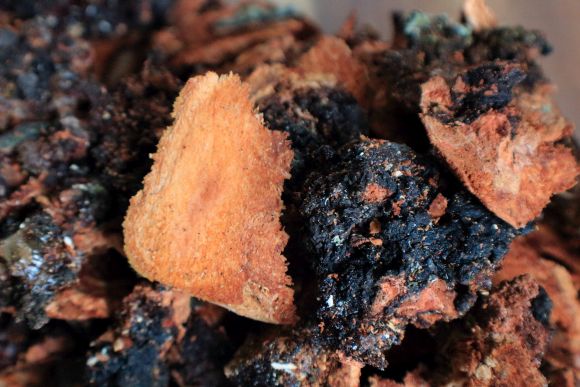
Due to its dense makeup; when breaking down the chaga, I like to almost shave it with a knife or saw, making thin pieces. This will make sense in a minute. You want workable pieces. Break the canker into smaller chunks when removing from the tree. It is important to remember responsible harvesting; you don’t want to take the entire conch; simply because it is less likely that the chaga then regenerates in the future. I like to shave it thin because I choose to dehydrate the pieces immediately; shaving it later on is just not an option. It will never be as soft as when it first come off the tree, hence working the chaga into smaller pieces straight away. Once dehydrated (overnight at a temp of 115°F) it is ground, processed and powdered… This is quite a difficult task. Shavings breakdown easier than chunks when put into a grinder, food processor or mortar and pestle.
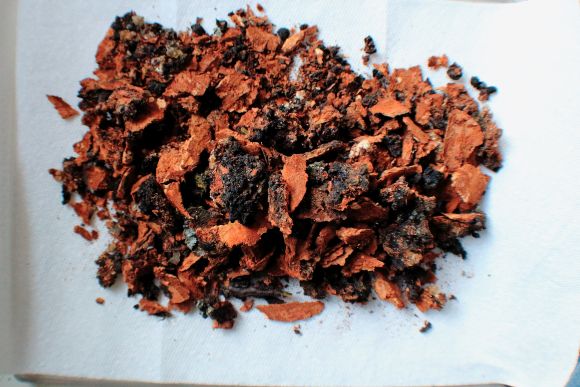
Once you have a powder, use it as you see fit; People have used chaga in beers, teas, “brews”, extracts, coffee blends… The possibilities are endless but the idea is the same; you have to extract all of the nutrients from the body and utilize your extraction; not the actual fruit of the fungus. Chaga has a high concentration of nutrients & vitamins that make this a desirable and beneficial process. For some light reading please check out this link pertaining to the health benefits suggested from consuming Chaga. As I am not a doctor, I will refrain from stating any of this as fact and stick to how to process this foraged canker into something you can utilize!
Through internet research, reading books and the exercise & practices of a dear friend (Sir. Colin Smith); I have come to this process as a prefered method; A Chaga Tincture.
A “Tincture”, according to Wikipedia, is an alcoholic extract of plant or animal material or solution of such, or of a low volatility substance (such as iodine and mercurochrome). To qualify as an alcoholic tincture, the extract should have an ethanol percentage of at least 25–60% (50–120 US proof.
The “2 step” extraction:
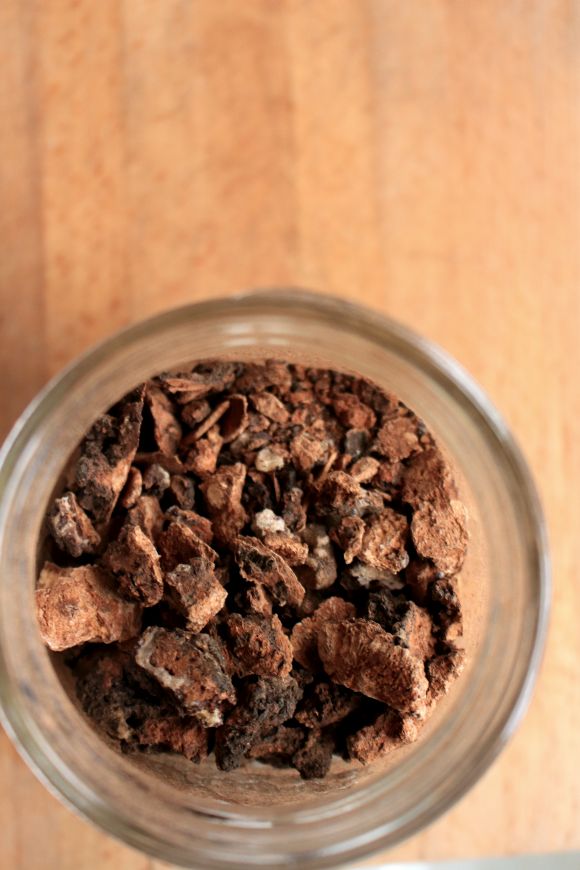
For this process you will need:
16 oz Chaga “Powder” (As finely ground as you can get it without busting your equipment…)
16 oz Everclear (I’ve read that any alcohol over 100 proof will suffice)
1 qt mason jar
Water
Step 1:
In a quart mason jar, add 16 oz chaga powder to 16 oz Everclear… Cap it and wait; this process will try your patience but lead to a quality end product. Notice that almost instantly the contents of the jar are murky and swampy mud brown. This will darken a bit over time and take on more of a coffee color.
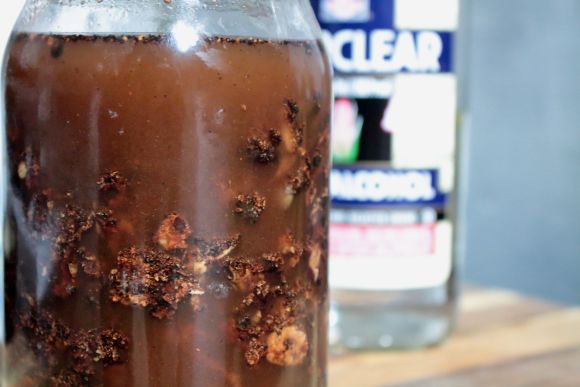
Shake your jar at least twice a day over the course of 8 weeks. By agitating the mixture you are essentially shifting the pieces of chaga and insuring that the surface area of the solids are being exposed to the alcohol and allowing the liquor to leech as much nutrients as possible. this is building a potency in your extract.
Step 2:
After 8 weeks of macerating the chaga; Strain the contents of your mason jar through a fine sieve, collecting the liquid in another jar reserving for later. With the solids collected in your sieve, you will then go into a clean pot. Measure the amount of liquid collected. You will want an accurate reading in regard to the amount of liquid ou retain as that number will play into figuring out how to properly dilute your Tincture. Currently, your extract sits at 190 proof… assuming you used Everclear, which is roughly an ABV (Alcohol by volume) of 95%. You want to lower the alcohol percentage to something tolerable; typically you’re looking for a ABV of any where from 25-40%. According to a good friend and fellow enthusiast, (Sir. Colin Smith.) the only implications from the ABV percentage is whether or not you’re consuming a tincture or a “Stiff Chaga Cocktail” daily… I like to Aim for the 25% for this Tincture simply because I understand that it is widely regarded that a liquor with an ABV of 20% is shelf stable, also, im not looking to get a buzz so i find no need for anything stronger. “Shelf stable” plays into the preservation of your tincture and you hard work; Also I understand that over time your ABV% will dip a bit with age, so an ABV of 25% accounts for that fluctuation.
I follow the algorithm, Volume x ((ABV/DABV)-1) = Volume Needed
… DABV= Desired Alcohol by Volume
I.e. 8 fl oz x ((95%/25%)-1)= 22.4 fl oz : I would add 22.4 fl oz of water to the 8 fl oz of 95% liquor to dilute the tincture which would in turn get me to a 25% ABV.
Take the recorded measurement of your reserved liquor and fill in the algorithm, double the amount of water needed; Add the water into the pot with the chaga chunks and slowly bring to a simmer; Let this gently steep and simmer down until your are reduced by half. at this point you will add enough water to again double your volume in the pot. And again you will reduce by half. Using the numbers in the given example above; on your second simmer; you will want to end with roughly 22.4 floz. allow this to cool, then use this decoction to dilute your Tincture.
This 2 step process is time consuming but thought to be the best way to extract the majority of the nutrients from the Chaga. Macerating your pieces in Alcohol first will leech out some components such as betulinic acid (which is thought to provide the “healing” properties), and phytosterols (which are responsible for the LDL cholesterol lowering effect) that simmering in hot water alone is not capable of extracting.
The hot water extraction is 2 fold; both logical and purposeful. By steeping the Chaga after you have macerated it in the Alcohol; you are now effectively breaking down the Chitin which the alcohol is incapable of doing alone and extracting the remaining components and properties which would be the purpose. Secondly its only logical to add a Chaga decoction to dilute your Chaga Tincture… Chaga on Chaga. A couple of drops in a coffee in the morning… or a shake, or juice. I find it to be a soothing practice.
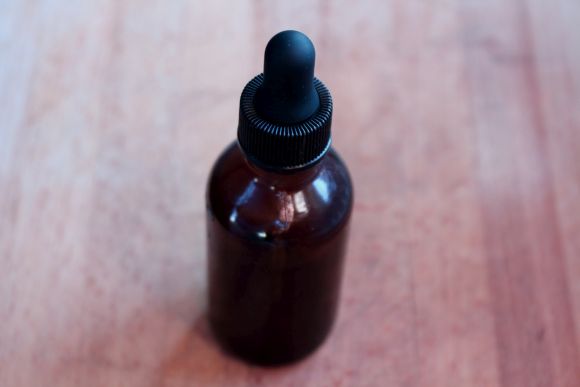
Side note: After a couple months of chaga in my life and I found myself in the midst of a Physical. I noticed when looking at the results with my doctor that my LDL Cholesterol was considered low… 75 mg/dl, he Told me that the National Heart, Lung, and Blood Institute suggests a reading under 100 mg/dl is optimal in avoiding Heart Attacks, Strokes and other a number of other conditions, as this is the cholesterol largely responsible for plaque buildup in your arteries. I’m not suggesting that it was the Chaga… My personal diet includes many of foods that could lend to this finding; it was merely an observation made when researching the benefits of Chaga… Lowered LDL Cholesterol.
Research “recommended dosage” according to your BMI. Also research if chaga is for you. This is not an article to convince you to “drink the juice”, rather a recipe for those interested in tinkering and taking a ride on the Chaga Train… Chaga Chaga Choo Choo!
Many of the links will lead to reference pages for the information shared here; Hopefully you found something intriguing & useful!
